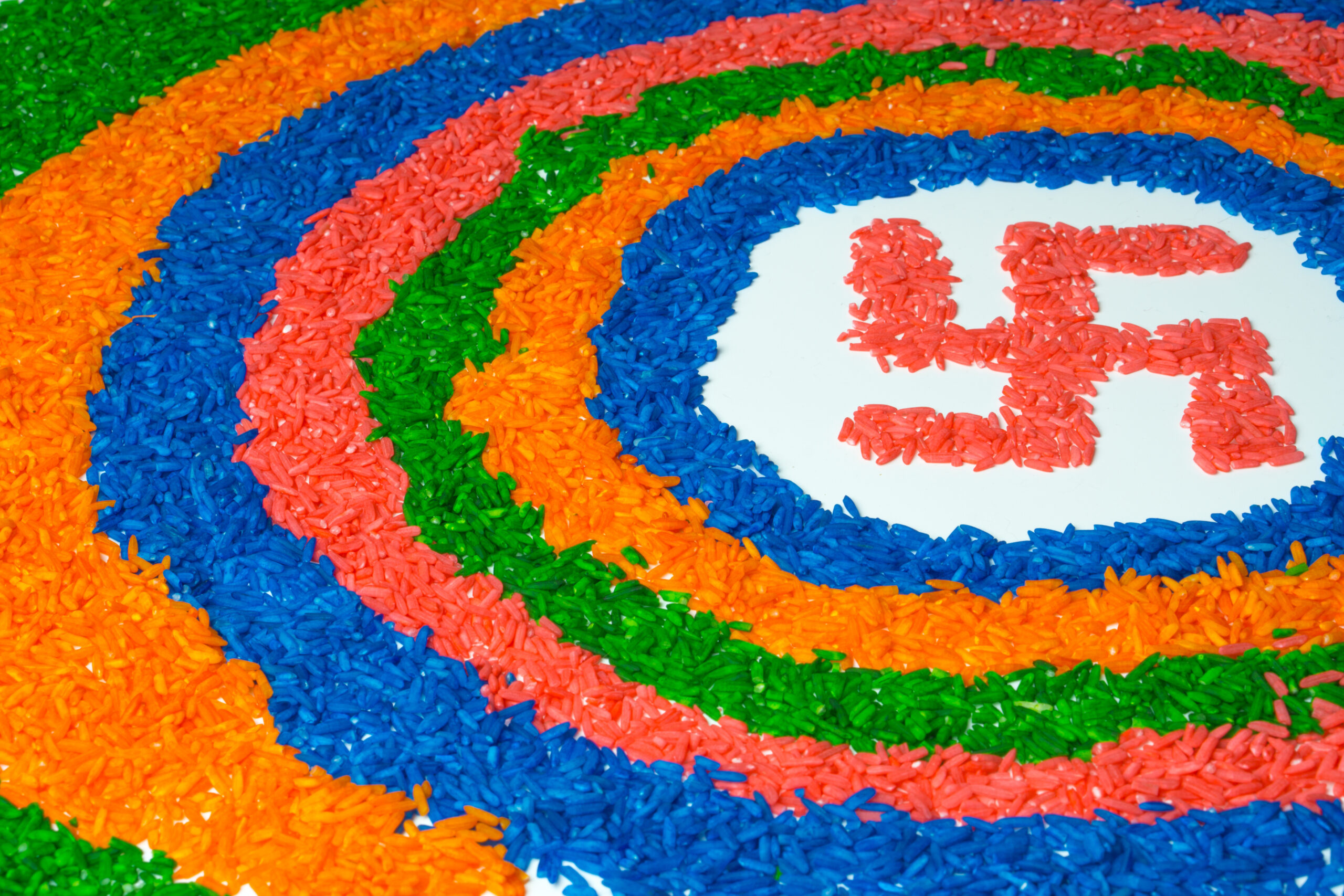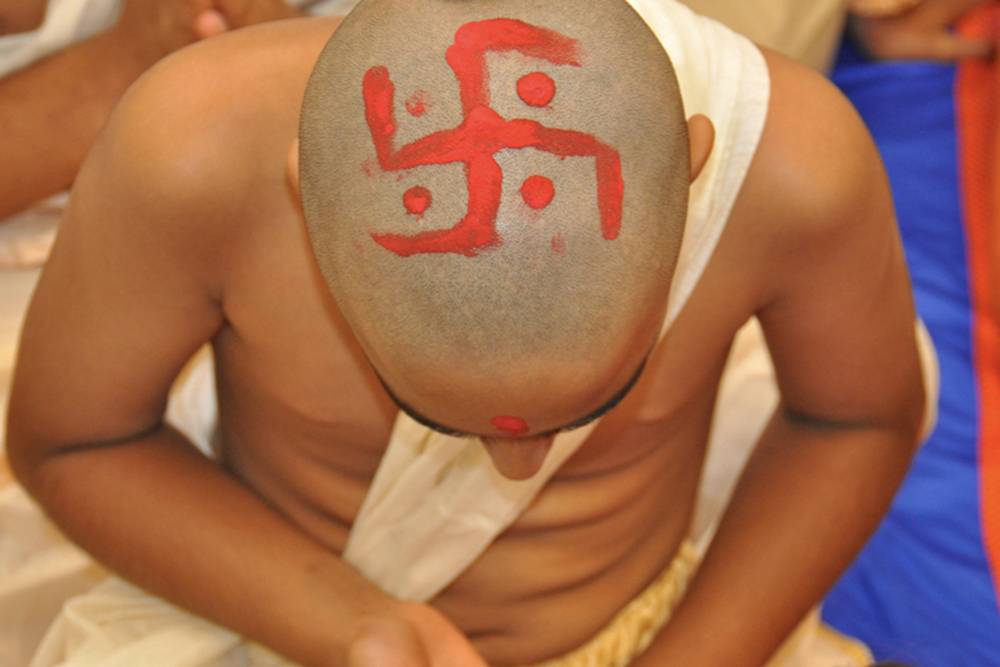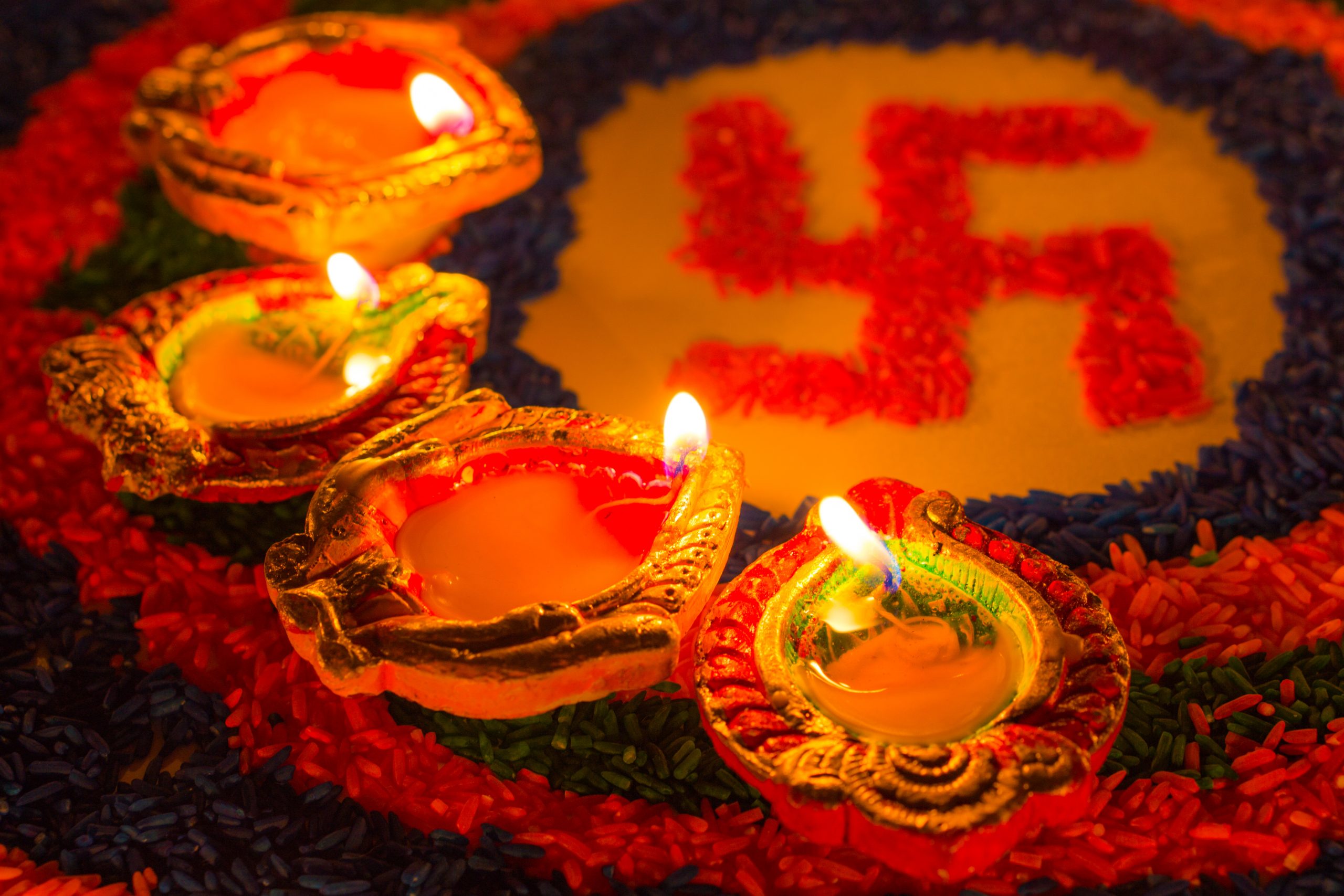The swastika is the Indic representation of one of humanity’s oldest and most consistently used symbols across nearly every human culture. It has more than 10,000 years of positive associations behind it, continuing actively to this day with more than a billion people continuing this tradition.
The oldest instances of its use that archeologists have discovered go back to not long after the last ice age in what is now Ukraine. It has been used consistently in the Indian Subcontinent for several thousand years, as well as in East Asia. Pre-Christian cultures used it in Europe for a similarly long time period. Recognizable swastikas have been used in Africa and North America as well. In Europe and North America the swastika was used as a symbol of good luck right up until World War Two and had been experiencing a resurgence for several decades prior to this.
The hateful use of the symbol by Nazis — known most properly as the hakenkreuz or ‘hooked cross’ — has less than a hundred years of history behind it and less than two decades of official usage by a nation of less than 100 million people at the time. Today it is hard to determine how many people ascribe to this hateful ideology and worldview. If registered users at one of the most prominent white nationalist websites is any indication, the numbers are minuscule compared to either people using the swastika with its traditional intent and purpose or to the general population in the West.
For many people today in the West, the association between Nazism, white supremacy, and the Party’s emblem seems inseparable and any traditional use by Hindus, Buddhists, Jains, and others insensitive. However, we believe that through dialogue and education the important distinction between the Nazi hakenkreuz and the swastika can become common knowledge.









































